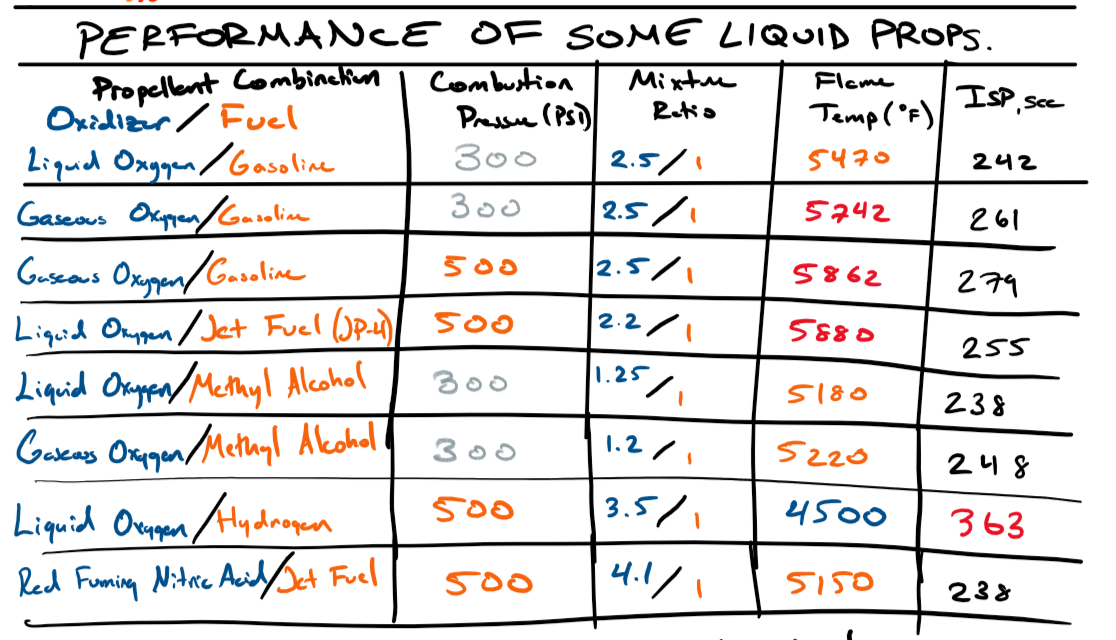Choosing Your Propellant
Choosing a propellant requires careful consideration since these chemicals are extremely volatile and subject to serious dangers, please take note!
Before we get into the nitty gritty of Propellants, let's first go though the basic terminology of propellants and rocket engine characteristics.
From this chart you can see that the most optimal choice of Oxidizer and Fuel is Liquid Oxygen and Liquid Hydrogen.
